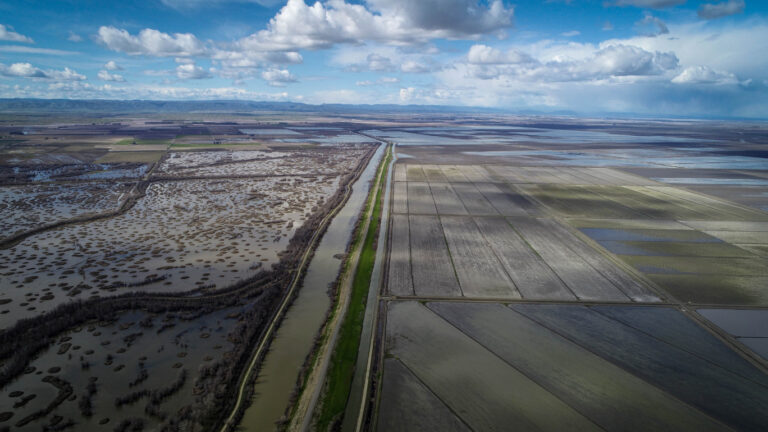Reactivating floodplains in the Sacramento Valley to benefit fish and farms
As climate change exacerbates drought, it can often feel like there is not enough water to go around to protect the interests of both humans and wildlife. However, CalTrout takes a unique role in the conservation space to balance those interests and bring about benefits for both farmers and fish. How? In the Sacramento Valley, we work with a coalition of partners to reactivate floodplains.
A floodplain is a low-laying area of ground adjacent to a river, subject to routine (you guessed it!) flooding. Cyclical flooding allows river ecosystem access to the tremendous food web of resources produced in floodplain wetlands. It is the act of the river expanding to inundate these nutrient-rich lands that allows the river food web access to the solar energy stored in floodplain plants and soils. This energy travels into the water via microbial break down of plant matter. Microbes and bacteria eat the nutrients, which in turn feed abundant invertebrates, which in turn feed fish and birds. It’s this consistent inundation of floodplains that allows river valleys to actually make fish!
Reactivating a Disconnected Food Web
Historically, California’s Central Valley was home to millions of acres of floodplain habitat that supported, among other species, critically endangered Chinook salmon. As small juveniles on their way to sea, these fish fed on the abundant food produced on floodplain habitat. The larger a baby fish is when it reaches the ocean, the more likely it is to survive several years in the marine environment and return to the river as a large adult salmon ready to spawn.
In order to develop the valley for agriculture and permanent settlements, flood control structures such as levees were constructed to corral mighty rivers and push water quickly through the system, hindering natural flood processes. Over time, these levees made the Central Valley easier to farm. However, as a result, floodplains were disconnected from rivers, effectively starving river food webs and the species dependent on them for survival.
Today, 95% of the Central Valley’s historical floodplains are cut off from the river by […]
Full article: caltrout.org

